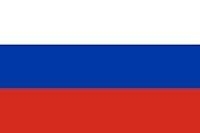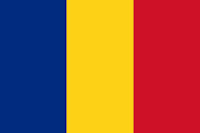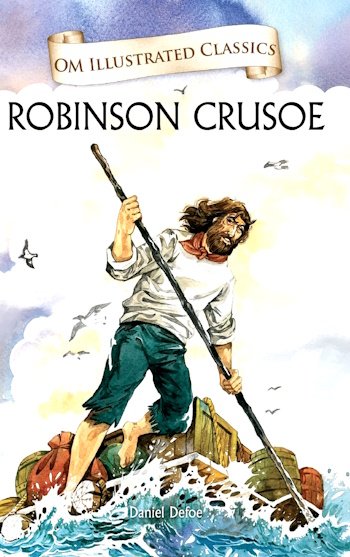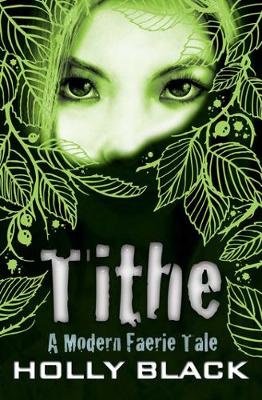Privately, the Roosevelt administration continued to weigh the merits of allowing Nisei men to serve. Ever sensitive to political risk, Roosevelt delayed a decision until after the November 1942 midterm elections. With anger mounting, Army chief of staff General George C. Marshall approved an all-Nisei combat unit on the first day of 1943. Twenty-seven days later, Secretary of War Henry Stimson lifted the service ban on Japanese Americans and announced the formation of an all-volunteer Nisei combat unit, the 442nd Regimental Combat Team.13
The following week, the War Relocation Authority began requiring every camp resident seventeen years of age or older to complete a loyalty questionnaire. Question No. 27 asked if the person would be willing to serve in combat whenever and wherever ordered. No. 28 asked if the person would forswear any allegiance to the Emperor of Japan.
For many young men in the camps, the questionnaire provoked a crisis of conscience. Many were willing to serve, but only if they and their families were released and their rights restored. Others deeply resented that they were being asked to declare their loyalty to America when the same question wasn’t being put to other Americans.
Despite the misgivings, more than 90 percent of camp residents answered yes to questions 27 and 28. In all, more than 65,000 draft-age Nisei men in the camps answered “yes” to both questions; 13,000 answered no to at least one question, and 6,733 answered no to both questions.14
In July 1943, under pressure from the army, members of Congress, and even some officials of the Japanese American Citizens League, the War Relocation Authority (WRA) acted to punish the men whose questionnaire answers had been deemed unacceptable. They would become known as the No-No Boys because of their responses to questions 27 and 28. Beginning in October, more than twelve thousand men, women, and children labeled as “disloyals” were transported to a newly created segregation center at the existing Tule Lake incarceration camp in Northern California. The camp had been transformed into a maximum-security prison, with an eight-foot-high double fence and a military police battalion equipped with armored cars and tanks.15
Overnight, the Tule Lake camp became a cauldron of resistance and dissent.
In early November, the tensions came to a head during a visit by WRA national director Dillon S. Myer. When five thousand inmates gathered outside the administration offices to show support for their demands, the camp director called in troops. The ensuing crackdown was christened the Tule Lake Riot in newspaper coverage. Martial law was declared in the camp and military police hunted down the leaders of the protests and imprisoned them in the camp stockade without charges or trial.
AS THE LOYALTY QUESTIONNAIRE THREATENED to plunge the Heart Mountain camp into turmoil in early 1943, Yosh Kuromiya immersed himself in his artistic pursuits. After initially working as a trash collector at the Pomona assembly center, Yosh found work in the sign shop. At Heart Mountain, he found a similar outlet for his art producing the camp’s information posters.
Yosh’s work introduced him to a community of Japanese and Japanese American artists and illustrators incarcerated in the Heart Mountain camp. They included painter and illustrator Benji Okubo, painter and muralist Hideo Date, Disney animator Rokuro (Bob) Kuwahara, painter Shingo Nishiura, and painter, lithographer, and photographer Riyo Sato.16 Yosh began attending art classes taught by these talented professionals. He fell under the tutelage of Okubo, an accomplished oil and watercolor painter.
As Yosh honed his artistic skills, administrators pressed camp inmates to complete the loyalty questionnaires and volunteer for the army. Yosh had answered question Number 27 with a conditional yes, expressing willingness to serve in the US armed forces if his civil and constitutional rights were restored. His answer to question Number 28 was unambiguous: He disavowed any allegiance to a Japanese emperor he had never venerated in the first place.17
Meanwhile, camp militants became increasingly bold. A Nisei inmate named Frank Inouye established a group called the Heart Mountain Congress of American Citizens and forwarded a list of demands that included a restoration of civil rights and rejection of racially segregated army units as a prerequisite for enlistment.
Enthusiasm for the army recruiting efforts was minimal in the camps. The population of Heart Mountain had reached a peak of 10,700 people in January 1943, and WRA national director Dillon Myer had predicted that as many as 2,000 Nisei men in the camp would volunteer for military service. The actual number was 38.18
The yearlong army enlistment drive managed to attract only about 1,200 recruits from the ten camps in the continental United States—a number reduced to 805 after factoring in the results from physical exams and the loyalty questionnaire. At the same time the War Department was trying to find Nisei recruits willing to die for the country that had incarcerated them, 800 Nisei men in the Heart Mountain camp renounced their US citizenship.19
In August 1943, the all-Nisei 100th Battalion—an army outfit composed of Nisei men from Hawaii—quietly sailed for Europe and then on to North Africa. Within days of the September 3 invasion of the Italian mainland at Salerno, the 100th was taking casualties in combat. A growing sense of urgency infused the War Department’s recruiting campaign.
In November, as fighting raged in Italy, resistance in the camps intensified. Around the time a violent confrontation broke out at the Tule Lake segregation center, at Heart Mountain a former high school teacher from Los Angeles Country, Kiyoshi Okamoto, formed what he called the Fair Play Committee of One to challenge the legality of the forced incarceration. Okamoto began building a following with mess hall lectures about the unprecedented violation of rights represented by the camps.
In January 1944, with the army recruitment drive a failure and 100th Battalion casualties rising in Italy, Secretary of War Henry Stimson ordered a resumption of the draft for Nisei men. In Heart Mountain, the response was emphatic. Six days after Stimson’s order, Kiyoshi Okamoto partnered with his growing group of disciples to reorganize his Fair Play Committee of One as the Fair Play Committee. Their goal was to resist the draft of Nisei men from the camps.
Twenty-one months behind barbed wire had transformed Yosh Kuromiya. The lectures of the Fair Play Committee activists had resonated with him, and he resolved that if he received a draft notice, he would refuse to serve until his rights had been restored .20
Yosh had grown up more than a thousand miles from Ben Kuroki, and their lives could hardly have been more different to that point. If not for the war, their paths likely would never have crossed. But now, in early 1944, these two sons of Japanese immigrants were on a collision course.
Chapter 38
COMMONWEALTH CLUB
Ben was a bundle of nerves as he and his military minder arrived in San Francisco on February 3 for his appearance before the Commonwealth Club of California the following day. He had never delivered a formal speech in his life, and he wasn’t looking forward to it. The War Department’s cancellation of his interview with Ginny Simms nine days earlier had shaken Ben. The public backlash to the lurid news reports about Japanese maltreatment of American prisoners of war had unsettled him even more. With the country again seething with anti-Japanese rage, Ben felt as if the clock had been turned back to the early days of the war.
In the days since the atrocity stories had appeared, a noisy collection of politicians and civic leaders had called for the continued incarceration of Japanese Americans for the duration of the war. Some had even urged that camp inmates be permanently barred from their West Coast homes. Others demanded that the No-No Boys in the camps be stripped of their American citizenship and deported to Japan. The public mood had darkened so quickly that Ben now doubted the wisdom of challenging the anti-Japanese bigots from the Commonwealth Club stage.
San Francisco had figured prominently in the Kuroki family’s American saga. The city had given Sam Kuroki his first taste of America’s limitless promise nearly forty years earlier, and it had also exposed him to the scourge of anti-Japanese bigotry. Frazzled nerves aside, Ben swelled with pride at the prospect of being welcomed as an honored guest by such a prominent institution in the city where his father had begun his life in America.
Since its founding in 1903 as a forum for public discourse, the Commonwealth Club had become a coveted platform for figures of prominence—a place where the city’s elite gathered to hear top businessmen, bankers, professors, politicians, generals, admirals, foreign dignitaries, and diplomats address important issues. Through the war years, the club had maintained its relevance. Vice President Henry Wallace was scheduled to address the club three days after Ben.
If the Commonwealth Club was emblematic of San Francisco’s progressive streak, publisher William Randolph Hearst embodied the city’s split personality as the birthplace of anti-Asian hate in America. Hearst’s father was a wealthy mining engineer who owned several gold mines and other businesses and later served as a US senator from California. The younger Hearst was twenty-four when his father handed him the keys to the San Francisco Examiner, a daily newspaper the family patriarch had acquired as payment for a debt.
Grandly christening his paper “Monarch of the Dailies,” young William Randolph hired talented writers, including Mark Twain, Jack London, and Ambrose Bierce. With the Examiner as his flagship, Hearst established himself in New York City in 1895 by purchasing the failing New York Morning Journal. Plying readers with stories of sensational human drama, Hearst amassed fabulous wealth and power while promoting his political and social views to millions of Americans. As he swung from left to right politically, Hearst never strayed far from his embrace of nativism. California’s descent into anti-Chinese and anti-Japanese bigotry didn’t originate with Hearst, but the Examiner and other Hearst papers fanned the flames.
After suffering a series of financial blows during the Great Depression, Hearst had returned to California. By 1940 he had become something of a recluse, holed up in his remote estate, Wyntoon, in the shadow of Mount Shasta in the state’s northern reaches. The attack on Pearl Harbor had revived his longstanding animus for Japanese Americans, and Hearst’s San Francisco Examiner became a leading advocate of the mass expulsion and incarceration campaign carried out by the Roosevelt administration. Now Hearst’s Examiner was stoking national outrage over Japanese military atrocities.
On the evening of February 3, still uncertain about delivering his speech, Ben left his room in the Palace Hotel and made his way to the lobby newsstand. Perusing the papers, he was horrified by the bold headlines about Japanese atrocities. He hurried back to his room.
Ben had felt the pressure building since the cancellation of his Ginny Simms interview, and now the emotional weight of these past days overwhelmed him. His Commonwealth Club appearance was a horrible mistake, he feared.
AFTER A RESTLESS NIGHT, BEN SLIPPED on his dress uniform and made his way downstairs to the ballroom where the Commonwealth Club hosted its luncheons. It was known as the Gold Ballroom or simply the Gold Room, and much history had been made in the cavernous hall over the past two decades. Franklin Roosevelt had delivered a speech to the club from the Gold Room stage in the closing days of his 1932 presidential campaign. And just the previous month, California governor Earl Warren, a frequent Commonwealth Club guest, had spoken from the Gold Room stage in one of his regular appearances.
Ben was battling his nerves as he walked into the packed ballroom. News accounts would report more than seven hundred people on hand to hear the remarks of the celebrated Japanese American war hero. The audience included the Bay Area’s most prominent politicians, entrepreneurs, educators, writers, artists, and journalists. Near the front of the room sat the bespectacled steel tycoon Henry Kaiser, Sr., one of America’s wealthiest men and the owner of seven West Coast shipyards that had played a pivotal role in the Allied military turnaround in the Pacific. Guests at nearby tables included Stanford University president Ray Lyman Wilbur as well as two top University of California Berkeley officials, president Robert Gordon Sproul and provost Monroe Deutsch.
Like most elite associations of the day, the Commonwealth Club denied membership to women. But there was at least one woman in the audience as Ben entered the room, photographer Dorothea Lange. She was tanned from years of outdoor work, and was given to covering her cropped blond hair with a beret cocked at a jaunty angle. Two years earlier, she had witnessed the roundup and incarceration of California’s Japanese population, and she had been intrigued by Ben’s story, which had been recounted yet again that week in a Time magazine profile. Now she waited to hear what the country’s first Japanese American war hero had to say about the injustices being committed against people like him on the home front.
Nervously glancing around the room, Ben saw only a blur of faces. What did these people think about him after reading the stories about Japanese soldiers torturing and summarily executing surrendered American and Filipino forces in the Philippines? Introductions were made and he stepped uncertainly to the microphone. As he began speaking, Ben felt fear rising in his throat.
In a shaky voice, he apologized for his lack of polish as a public speaker. He began to tell his story in simple, earnest language. He described his life in Nebraska before the war, his horror after learning of the Pearl Harbor attack, his efforts to enlist. Softly, he described the misery of his first months in the army—the epithets, the ostracism, the loneliness.
As he spoke, Ben began to relax. He sensed warmth from the audience, not hostility. Questioning eyes now appeared to be empathetic.
He recalled his efforts to remain with the 93rd Bomb Group, his fight for a combat assignment, his heartbreak at being told he would not accompany his comrades to England. He recounted his tearful pleas and the compassion shown by those officers who accepted him as a loyal American. He described how he finally landed a crew assignment as a gunner and the terror and transcendent sense of belonging that combat had given him. He described the horrors of the Ploiesti raid and the pain of losing friends and comrades. “When you live with men under combat conditions for fifteen months you begin to understand what brotherhood is all about, what equality and tolerance really mean,” he said.
Ben spoke candidly about the anti-Japanese bigotry he had encountered. The recent atrocity stories had rekindled dark forces in the country, and neither his uniform nor his medals shielded him from this renewed wave of hate and prejudice. And then, words that shocked and shamed the audience: “I don’t know for sure that it is safe for me to walk the streets of my own country,” he declared.
He ended by speaking about his goal to avenge the Japanese attack on Pearl Harbor and the atrocities in the Philippines by serving a combat tour in the Pacific Theater. “When I visit Tokyo, it will be in a Liberator bomber,” Ben vowed, “and I won’t be flying alone.”





















